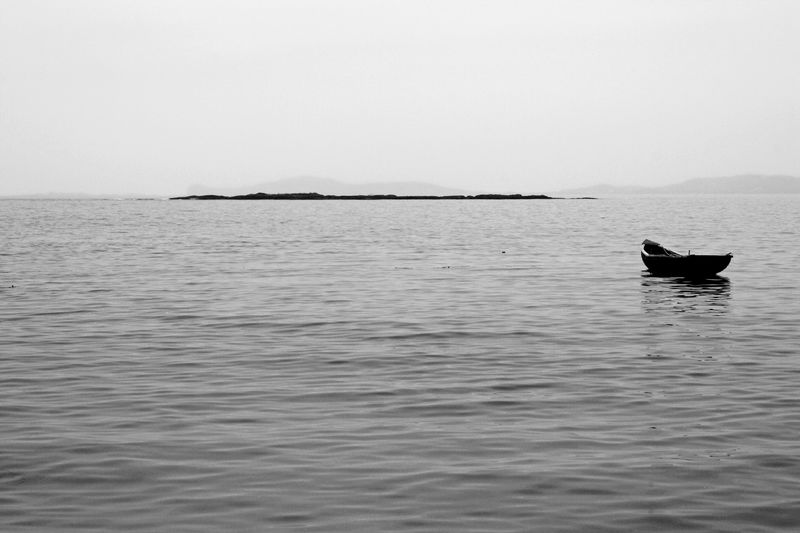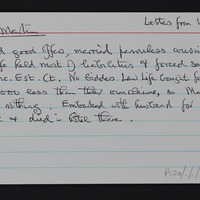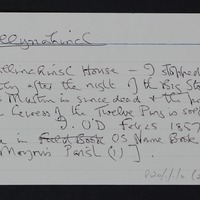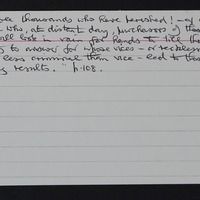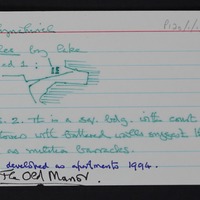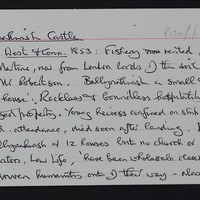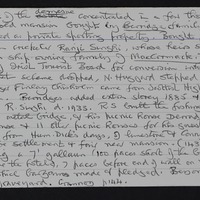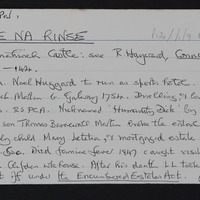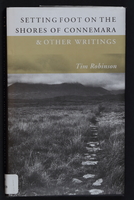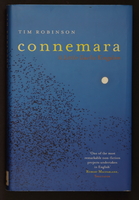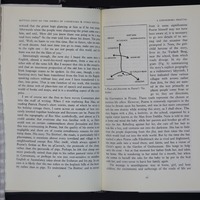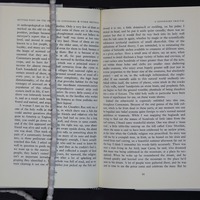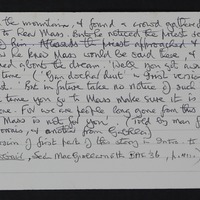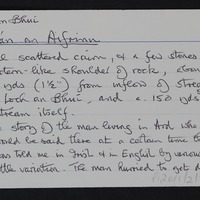Voices & Places
Tim Robinson’s walks through the landscape of the Burren, Oileáin Árann, and Connemara are meticulously recorded, and a clear evolution can be traced in his archive that takes the student of his work from his walking, to his mapping and writing, in a process that navigates through megalithic tombs, tales and ghosts and fairies, local heroes, and shipwrecks. The way his archive is organised is a fascinating insight into the methodology of his work. One substantial block of material comprises a townlands index. Information gathered about local historical, geological, and ecclesiastical features, along with place and folklore, is recorded together with the source of the information, often a local person who provided the information. While the knowledge gathered in the townland index is directly relatable to Tim’s maps, it also transcends it, placing it within a community context that is apparent is his writing.
View Tim Robinson's Townland Index in NUI Galway's Digital Archives Repository
Ballynahinch
In gathering information for the townland of Ballynahinch, Tim collated his findings into 34 cards, creating a narrative from a combination of primary and secondary sources. In describing Ballynahinch Castle, he traces ownership of the property from the Martins in the 18th century, through to famine times. He notes that following generations of extravagance, it was sold, eventually becoming a sporting property under the care of the Berridges, who later sold it to Indian cricketer Ranji Singhi. Tim places himself in the information gathering process, noting on one card that he stopped into the castle shortly after the night of The Big Storm in pursuit of some of his leads. The tales are relayed in print, In "Connemara Part 1: Introduction and Gazetter" (1990).
Mass of Ghosts
When writing about Loch an Bhuí in the parish of Carna, Tim describes Cnocán an Aifrinn [Mass Hillock], the site of a hair-raising episode in local lore. He notes that the tale was told to him by various people in both Irish and English, and with little variation. Tim commits the story to print in Setting Foot on the Shores of Connemara and Other Writings (1996), where he goes on to write 'that is one function of my work, this translation of the dense web of place-lore out of speech and memory into the world of books and maps, and it is a troubling aspect of the enterprise.' (p. 96)

